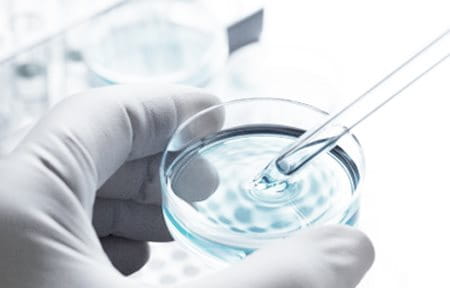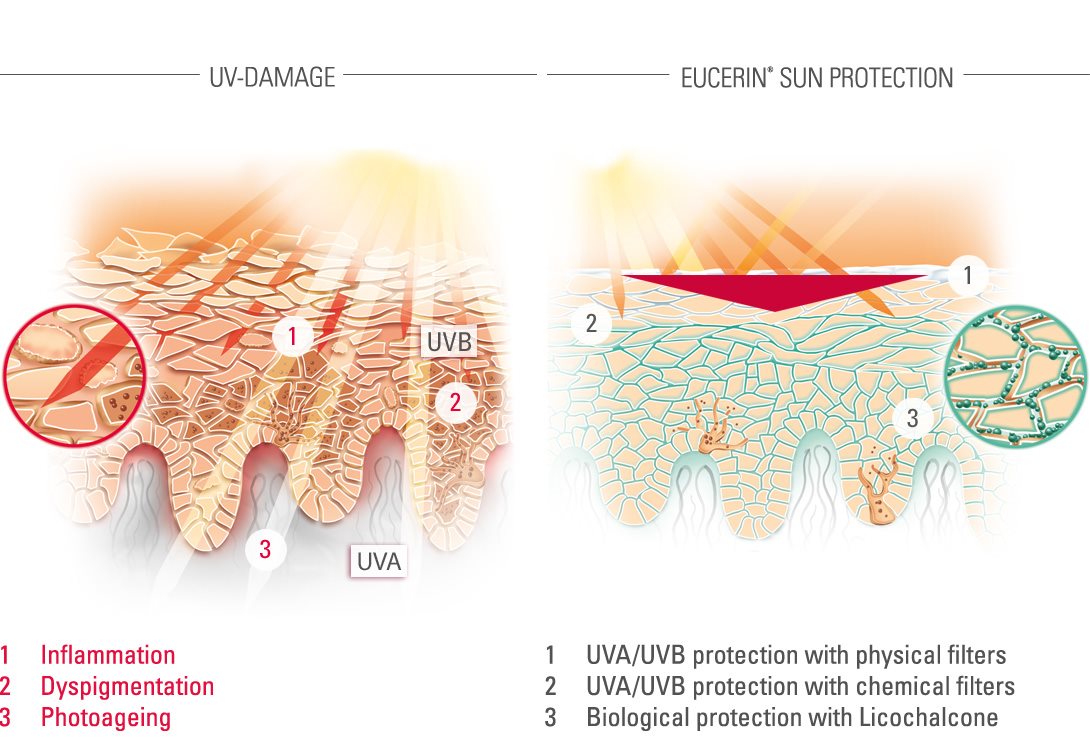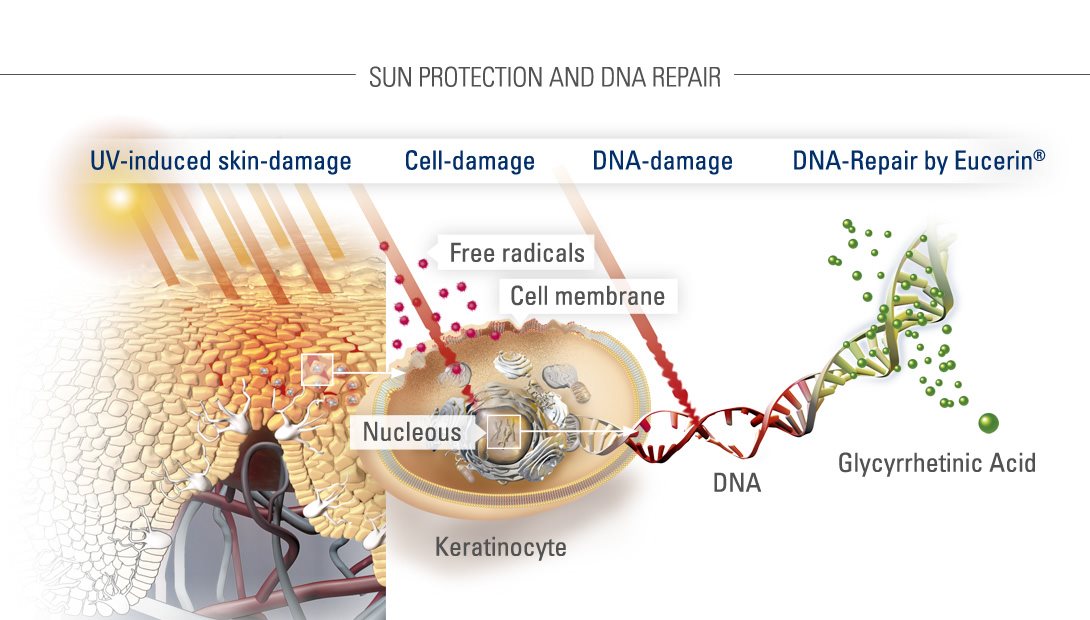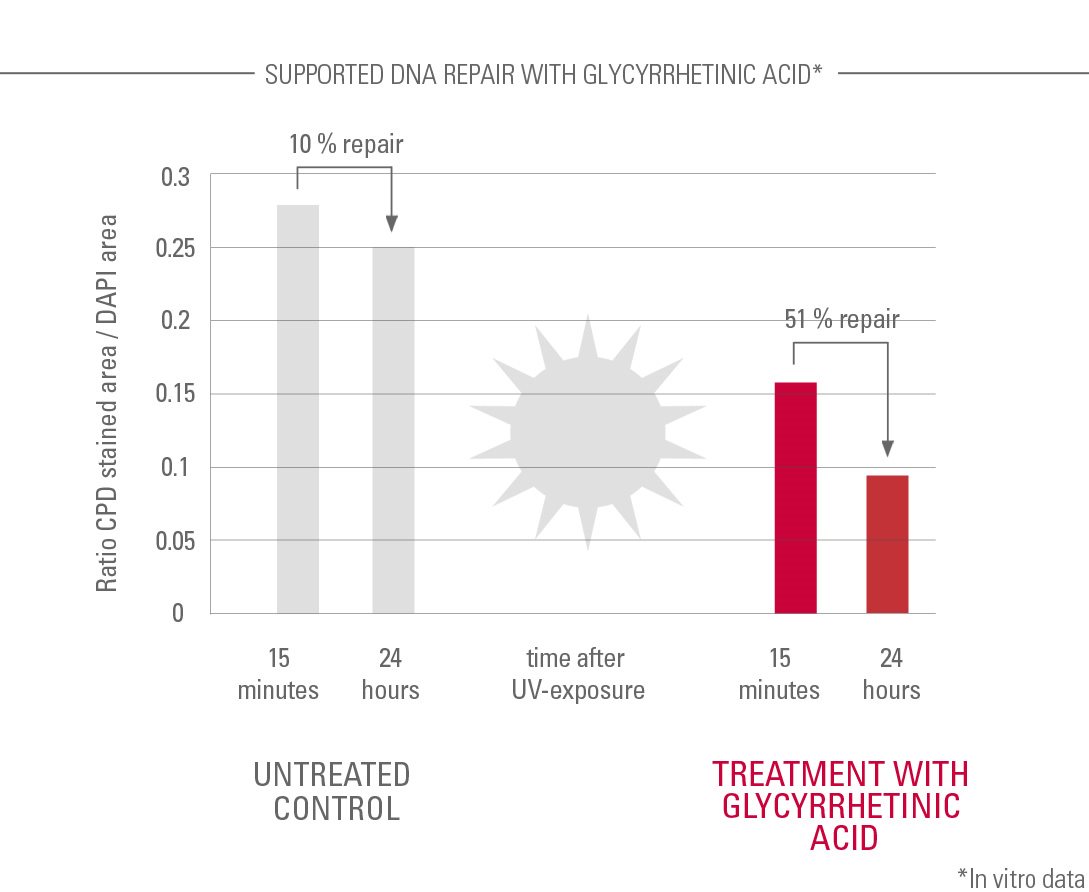As well as causing surface level damage, unprotected exposure to UV radiation causes invisible damage to the DNA within the core of each skin cell. DNA codes form all the building blocks (protein) that make up the human body, and even slight alterations to this code can cause premature skin aging and can even lead to the development of skin cancer. Eucerin’s DNA protection technology adds a further layer of protection against sun-induced DNA damage by supporting the body’s own DNA repair mechanisms.
A “FURTHER LAYER” OF PROTECTION AGAINST SUN-INDUCED SKIN DAMAGE


Eucerin takes its responsibility of providing expert skin care, including sun protection, very seriously. This includes constantly looking for new ways to improve the sun protection technology.
Cellular protection, and more recently DNA protection, are two important scientific fields that undergo extensive research done by Eucerin.
Frank Rippke, MD, Head of Scientific Management Eucerin, was intricately involved in the development of new approaches to sun protection.
From cellular protection to DNA protection
Cellular protection with Licochalcone A is a great example of a successful scientific finding that has improved the efficacy of Eucerin sun.
Licochalcone A helps to protect skin from cellular damage by neutralising the free radicals generated by UV radiation – the main cause of oxidative stress that leads to premature skin ageing and even skin cancer.

Now Eucerin is going one step further. “As well as our UV filter system* and our anti-oxidant Licochalcone A cellular protection technology, we have incorporated DNA protection, for an even more comprehensive protection against sun-induced skin damage – both in upper and deeper skin layers.”
*EU-compliant and Cosmetics Europe – The Personal Care Association (formerly called Colipa)
Among the many compounds we looked at for DNA protection, one, Glycyrrhetinic Acid, showed the most promise.
Glycyrrhetinic Acid is the aglycone of Glycyrrhizin, one of many known constituents from Glycyrrhiza glabra (licorice) root extract. It is a triterpenoid that is known for its anti-inflammatory, anti-oxidative and anti-microbial properties. Given its many well-known positive effects, we investigated the potential photo-protective properties of Glycyrrhetinic Acid in human skin.

“Its efficacy at modulating and supporting natural DNA repair processes in skin that had been damaged by UV light is exceptional. When combined, Glycyrrhetinic Acid and Licochalcone A work together in a complementary way to protect the skin from sun-induced damage. Cellular protection from Licochalcone A and DNA protection from Glycyrrhetinic Acid offers a approach to avoid sun-induced skin damage. They can help prevent photo damage and support skin’s own DNA repair mechanisms”, explains Frank Rippke.

“One thing we are keen to stress, however, is that even the best sun protection can let UV rays pass, causing cell damage down into the deeper epidermal layers of skin. If the damage is too big there is no possible way to repair 100% of the DNA damage. We therefore recommend using UV protection daily – even on cloudy days. “
“Every time we excessively expose our skin to UV radiation, our skin’s DNA is damaged resulting in premature skin aging.”
This can lead to loss of density or volume, appearance of wrinkles, age spots and rough skin.
“It is the face that gets the most sun exposure and therefore needs the most protection. This is the reason why most of the Eucerin facial sunscreens that are formulated for use on the face contain both Licochalcone A for cellular protection and Glycyrrhetinic Acid for DNA protection.”
